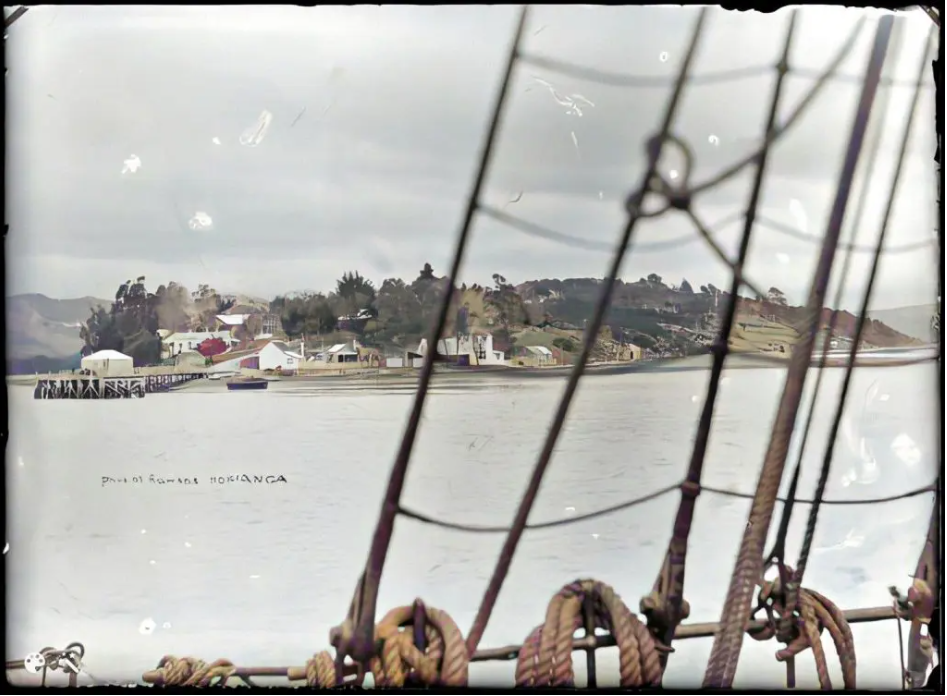The Peiwhairangi (Bay of Islands) Clendons
Captain James Reddy Clendon (1800-1872)
James Reddy Clendon became the best known of the Clendons who came to New Zealand. Born on 1 Oct 1800 and was baptised on 22 Oct 1800 in Deal, Kent, England. It appears that he was named after his uncle, James Reddy who was married to the sister of his mother and died relatively young.
He began his business career as London merchant and shipowner in association with his brother, John Chitty Clendon, a dental surgeon. He married Sarah Isabella Hill on 2 Oct 1826 in St. Phillips, Sydney, New South Wales, Australia. Her father was a first fleet convict and the family became quite established and prosperous in Sydney.
Their first child, James Stephenson Clendon, was born in London in January 1827. In 1828, as captain of the City of Edinburgh, he transported female prisoners to the convict settlement at Port Jackson, near Syndey, Australia, he then continued his journey, spending some time on the Australian coast, before proceeding to New Zealand for spars. Sarah Clendon accompanied him on this voyage, and in January 1829, off the coast of Hokianga, she gave birth, at sea, to their second child, Eliza Clendon. In 1830 he visited the Bay of Islands in the City of Edinburgh, and bought 220 acres of land located a few miles south of Kororareka, from Ngapuhi Chief Whetoi Pamare II. Captain Clendon and the City of Edinburgh then returned to London. Following the purchase of the schooner Fortitude, Clendon, his family and his business partner, Samuel Stephenson, sailed for New Zealand, arriving at the Bay of Islands on 31 August 1832. They formed a trading post to supply the rapidly growing Pacific whaling fleet, on the land that Captain Clendon had purchased in 1830. Here he and his family settled, and set up a trading station to supply the needs of the rapidly growing Pacific whaling fleet In 1837 Clendon added another 80 acres to his Okiato estate, and in 1838 he purchased 3,342 acres at Manawaora, on the seaward coast.
Clendon then became involved in Bay of Islands politics. In 1834 he was one of the signatories to a letter to James Busby, the British Resident, demanding punishment of a Maori who had fired on Busby when surprised by him while robbing an out-building. In 1835 Clendon publicly drained all his rum casks, apparently hoping to encourage sober habits among the riotous lower orders at the Bay. It was an unsuccessful sacrifice, however, since the unrepentant were making much money out of the trade. In this period, too, he supported Busby in his efforts to unite the northern tribes to thwart the pretensions of Baron Charles de Thierry, who hoped to establish himself as ‘sovereign chief’ at Hokianga. Clendon also signed the 1837 petition to William IV, praying for protection against increasing local lawlessness. An indication of his standing in the community was his appointment as president of the New Zealand Banking Company, which opened New Zealand’s first bank at Kororareka in September 1840.
Clendon’s commercial pre-eminence was assured when, on 12 October 1838, he was empowered to act as United States consul in New Zealand; but he could not assume full consular status, there being no government to which he could be accredited. However, he did gain virtually all the business of visiting American ships, and since he recorded the arrival of 151 American ships between 1839 and 1841, it was undoubtedly a profitable appointment.
This favourable progress suffered after the arrival of Captain William Hobson in January 1840. Clendon supported him in his negotiations for the cession of sovereignty to the British Crown, but the signing of the Treaty of Waitangi dealt a cruel blow to his American business, since it adversely affected United States interests, politically and financially. But Clendon did sell his Okiato property to the newly fledged administration, for the government establishment. Hobson, now lieutenant governor, took possession and had the land surveyed as a town. He named this Russell, and it remained the seat of government until February 1841. Owing to administrative problems, Clendon received only a small part of the purchase price and was obliged to accept in settlement a 10,000 acre block south of Auckland [later becoming the suburb of Clendon].
100 YEARS AGO
HOBSON SELECTS A CAPITAL PROCEEDINGS AT f ,RUSSELL REPORT BY FRENCHMAN
One hundred years ago, on 19th July, 1840, that able French naval commander, Captain Charles-Francois Lavaud, was writing home to his own government about the situation that he had found in New Zealand. He had arrived with the .Aube at the Bay of Islands on 10th July, and had at once entered into cordial relations with Lieutenant-Governor Hobson, although the establishment of British rule in New Zealand had taken the French by surprise. “The English flag,” wrote Lavaud, “floats at the place two miles away from the harbour of Kororareka, on the River Kawa-Kawa, where is the rising port of Russelltown, the name by which the town to be built there is to he called.” Kororareka was on the site of the modern town of Russell, but this was not the town which Hobson named Russell. This was situated at Okiato, miles south-west of the modern Russell and opposite Waitangi. Here it was that Lavaud called on Hobson, refused to call him “Excellency,” but every day sent Airs Hobson the French rolls turned out. by the deft hands of the Aube’s cookClendon’s Estate Purchased
For reasons that cannot be brushed aside as slight and insufficient Hobson desired lo get away from Kororareka, the chief centre of European settlement in the north of the New Zealand of 1840. The area of land on this tiny peninsula was very restricted. Then although the community had got rid of its worst characters, the many grogshops made it an unsuitable residence for the families of the officials — not to mention that it was much patronised ‘by roistering sailors. Felton Alathew, Hobson’s SurveyorGeneral, looked round the Bay for a spot with suitable land and a good anchorage alongside. He hit on Okiato, the property of James R. Clendon. a British trader who acted as American consul. Clendon had been at the Bay since 1880. and he had made himself comfortable. He owned one of the few houses in New Zealand that were at all approaching the dignity necessary for a governor. In fact, the greater part of the price asked by Clendon for his property of only about 880 acres was for the buildings on it. •
An Expensive Deal
Hobson lias sometimes been blamed for purchasing the Okiato estate and laying out the plan of a township on it when he was to decide a few months later that Auckland was lo he the site of his permanent capital. It. is easy to understand Hobson’s choice of Okiato, if one remembers that the greater part of the European population of New Zealand was located in the North. Certainly he paid a high price for Clendon’s property, but speculative values had already begun to rule, and it is doubtful “whether Clendon would have sold for less than the £15,000 finally agreed upon in March 1840. The land was worth only £2,000, but the buildings—a house, a store, two cottages, blacksmith’s forge and a carpenter’s workshop—were valued at £13,000. • Clendon’s Disappointment Clendon, however, was paid only £I,OOO cash down. Governor Gipps, of New South Wales, refused to sanction the purchase, and though Hobson, when New Zealand was separated from New South Wales, tried to honour his bargain, he no longer had behind him the ample resources of the British Treasury, but only the already embarrassed public purse of New Zealand. In 1841 Clendon received another sum in cash and 10,000 acres ~ at Papakura. This land quickly v slumped in value. Clendon bitterly regretted his bargain. The Government, for its part, made no attempt to develop its township at Bussell, once the decision had been made to move to Auckland. It disappeared so completely that its very name was transferred to another settlement. and to-day, though it is still possible to make out dimly where the I lines of the projected streets once lay, one can hardly imagine that here Airs Hobson entertained Captain Levaud to dinner, and a small but brilliant company gathered to discuss the prospects of the new colony and its new capital.
Franklin Times 19 July 1940
Having delegated his consular functions after the signing of the treaty, Clendon relinquished them entirely in 1841. He then resorted to farming his Manawaora land and entered his phase as a public servant. In 1840 he had been appointed a justice of the peace and had become a member of New Zealand’s first Legislative Council. As the administration stabilised, Clendon assumed the duties of police magistrate at the Bay of Islands in 1845, together with other minor government functions, and during the war with Hone Heke advised the British military on local matters. He was present in this capacity at the attack on Ohaeawai. After the war he continued in office at Kororareka, by then renamed Russell, and conducted a census of the European population of the north in 1846. From about that time his magisterial jurisdiction extended to include Hokianga.
In 1855 Sarah Clendon died at the Bay of Islands, leaving her husband with six children. On 9 January 1856 at Paihia, Clendon married Jane Cochrane, the daughter of Dennis Cochrane of Hokianga and his late wife, Takatowai Te Whata. James and Jane had eight children. Early in 1862, after a brief residence at Kerikeri, the Clendons settled at Rawene. As magistrate there under the Native Circuit Courts Act, with his son James acting as clerk of court, Clendon dispensed justice in informal surroundings and in conformity with Maori conceptions. His reputation in this respect was already well established; while resident magistrate at Russell in 1858, he had visited Hokianga and successfully settled 67 European–Maori disputes.
However, the Resident Magistrates’ Act 1867 repealed the Native Circuit Courts Act, and Clendon retired. He now reverted to his former occupation as a merchant, taking up licences to sell beer, wine and spirits at Rawene; these licences were current from 1869 to 1872. On 24 October 1872 he died at Rawene.
Clendon’s house still stands at Rawene. Built in the late 1860s, it is now owned by the New Zealand Historic Places Trust and is open to the public. Jane Clendon, only 34 years old at James’s death, lived until 1919.
Source: Jack Lee, ‘Clendon, James Reddy’, Dictionary of New Zealand Biography, first published in 1990, updated February, 2014. Te Are – the Encyclopedia of New Zealand, https://teara.govt.nz/en/biographies/1c19/clendon-james-reddy, accessed 3 Mar 2018.
See the following E-Book available from Amazon.com (based on MA thesis)

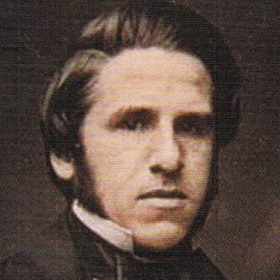
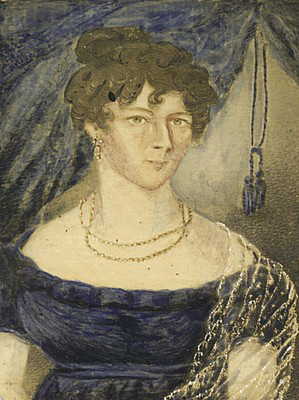
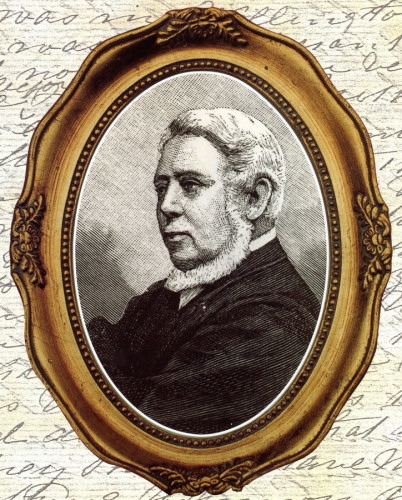
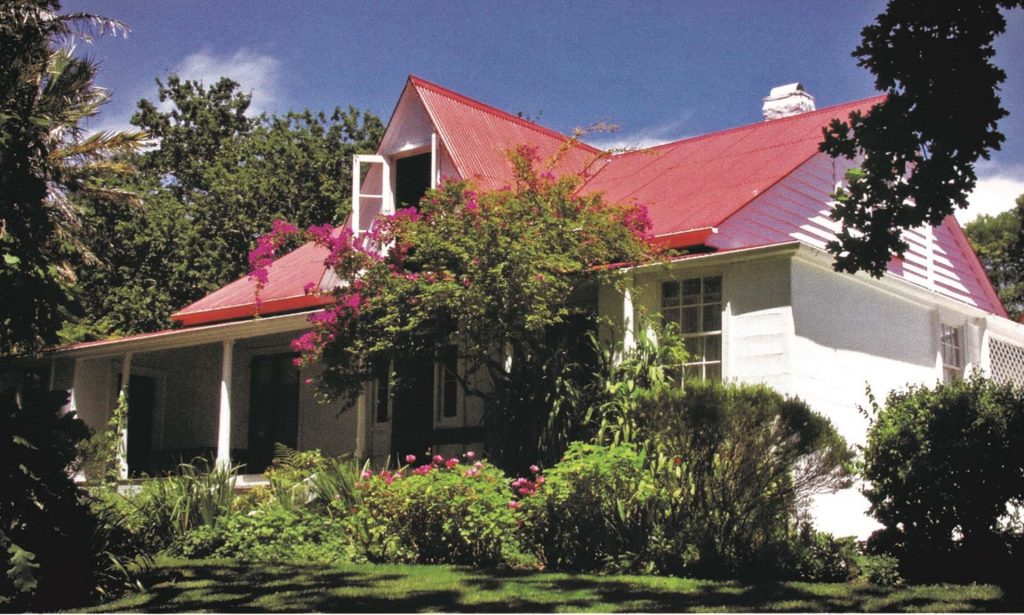
On 11 Aug 1855 Sarah Clendon died at the Bay of Islands, leaving her husband with six children. On 9 January 1856 in Paihia, Clendon married Jane Cochrane, 38 years his junior, the daughter of Dennis Cochrane of Hokianga and his late wife, Takatowai Te Whata.
Jane Takotowi COCHRANE was born on 28 Jul 1838 in Rahu-Rahu Hokianga, New Zealand. She died on 21 May 1919 in Rawene, Hokianga, NZ. She was also known as Princess Takotawi Te Whata and also Mihi Kererene. When aged 18 Jane married the 55 year old widowed James. She was a cousin of the Chiefs Patuone and Tamati Waka Nene with an ancestory on her mothers side going back to “Kupe”.She was also known as Princess Takotawi Te Whata and also Mihi Kererene
After his death, Jane Clendon was left with eight young children, the eldest not quite 16 years and the youngest only 17 months old. She also inherited a crippling load of debt from her husband. Before the 20th century, there was no government support for families in financial difficulties, so Jane was forced to pay her debts and provide for her eight children by undertaking small deeds such as selling firewood, bark, and home produce. By 1881 Jane had paid her debt, managing to save her house and educate her children.
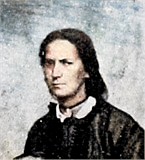
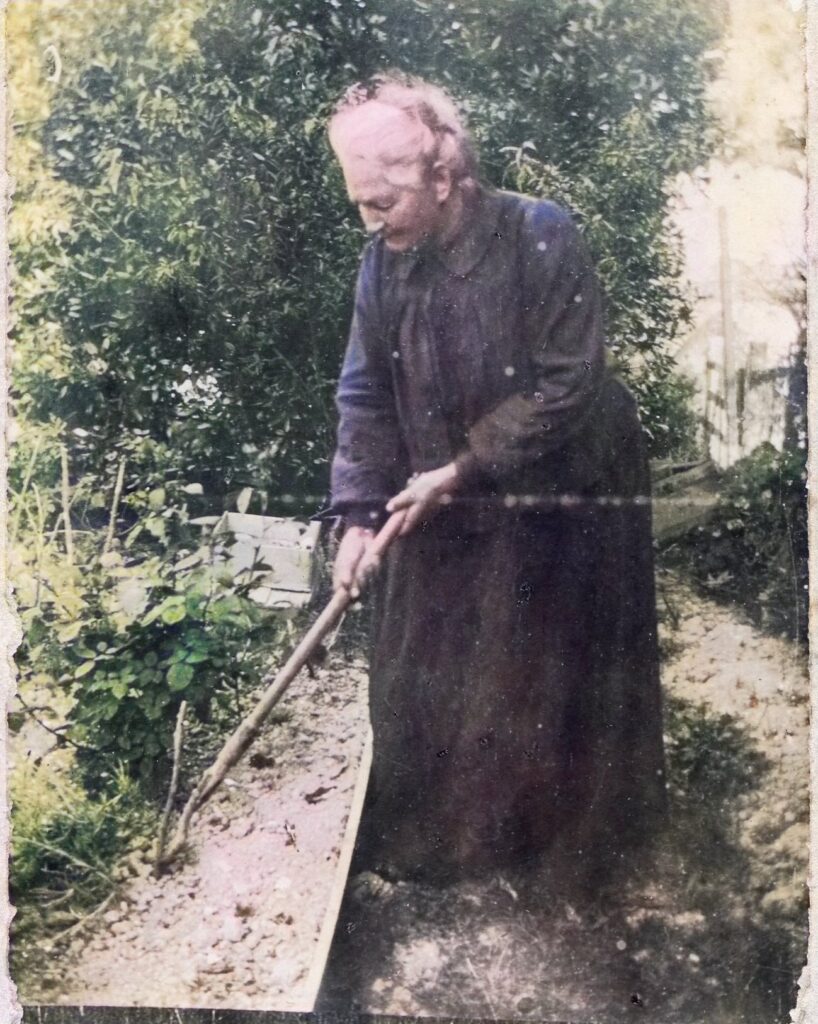
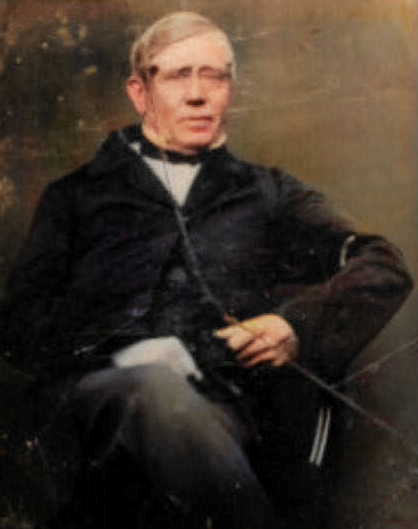
There is a suburb in Auckland called Clendon located to the west of Manurewa. Clendon is named after Captain James Reddy Clendon who in 1840 traded land he owned in the Bay of Islands with the newly formed New Zealand Government for 10,000 acres (40 km²) of land, then south of Auckland CBD.
Wikipedia
Clendon NZ snippets
Clara Emily Clendon (1866-1889)

This book was given to Clara Emily Clendon from her friend Olga von Sturmer who wrote an inscription on the first page which reads: ‘Clara Clendon with Olga von Sturmers love 1884.’
It seems that the Clendon and von Sturmer families were friendly as Clara and Olga’s fathers, James Reddy Clendon and Spencer William von Sturmer, were both resident magistrates in the Northland region during the late 1800s. The children from the Clendon and von Sturmers families, were schooled together and taught by a governess, Mrs Bennett. (1) So, it is likely that these children formed tight friendships.
(1) R. M. Ross, ‘Clendon House Rawne,’ Historic Places Trust, 1978, p.10; Florence Keene, ‘Under Northland Skies,’ 1984, p. 119.
Judge Clendons

Gisborne Standard and Cook country Gazette 21 May 1891
Death of Mr James Stephenson Clendon
DEATH OF MR J. S. CLENDON.
The many friends of Mr James Stevenson Clendon, Stipendiary Magistrate in the North, and a very old identity of the Bay of Islands district, will regret to learn (says the Kawakawa “Luminary”) that after a lingering illness of two months’ duration he passed away to another sphere at about 2.30 a.m. on Thursday last, 9th inst., at his late residence in Russell. Deceased, who was a most abstelnious man, had contracted heart disease, while’ dropsy and paralysis ensued
since becoming bed-ridden. There is no doubt that his affection was brought ou by exposure in all weathers, which he had to endure in the capacity of his official duties going over the district, which included the Counties of Hokianga, Mangonui, Whanaroa and Bay of islands. Deceased was “wedded” to Russell. He was a native of England, and came out to the colony with his parents when about four years of age, settling down in Hokianga about sixty years ago. When young Clendon could do for himself he married and settled down at Old Russell Point. In the early sixties deceased wa.s appointed magistrate for Whangarei district. Some eight years
ago he retired from this position and, we believe, accepted his Civil Service allowance. Later on, however, he was appointed a temporary Land Court .Judge, ou the East Coast by the present Government, a.nd some six years ago accepted the Stipendiary Magistrateship for this district. Deceased was a man of good heart, and beloved by all who knew him, and died at the ripe old age of sixty-nine years. He leaves a widow, one daughter and one sou (Mr Edwin Clendon, solicitor, of the Thames) to mourn their loss.
Mr Clendon was exceedingly well acquainted with native matters, and no one, knew the. Maoris, and Europeans too, of the North as well as he did. His last important public service was performed last year, when he accompanied the Government military force which went to Waima, Hokianga, at the time of Hone Toia’s disturbance.
Auckland Star 23 Nov 1899
Land Court
NATIVE LAND COURT.
AN INTERESTING CASE. \ Final judgment was Riven in the Rawhiti case, at Russell, on Wednesday. The block contains 15,000 acres. The bulk of the land was awarded to Pukepuke Ahitapu and party, i.e., to the descendants of.Manu, Moka, and To Wharerahi. The Tangatapu Valley was obtained by To Waaka Hakuene and his patty; and an area of some 2000 acres at Hanai by Ngati Kuta, of whom. Himi te Nauna and Putoto” Kercopa are the leading people. An area of 1600 acres, at Deep Water Cove, was allotted to several sections of Ngapuhi, who, though their grandfathers took part in the conquest of the land from the former owners—the Ngaroraurnati— about tho year 1325, have not had continuous occupation of the land since such conquest. The island of Urup’tkapuka was also awarded, partly to Pulcepuko Ahitapu and his people, and partly to To Waaka Tlakttonc and party. , An interesting feature in connection with the ease is that the Scenery Conservation Commissioners are wishful to obtain Deep Water Cove as a scenic reserve. At the conelusion of the hearing, Judge Edgcr, at the request of Air. Percy. Smith, the chairman of the Commissioners, explained the matter to the natives, with the object of gaining their consent to the land being so set apart. Several of tho leading chiefs expressed their sympathy and agreement with the proposal. Another interesting feature was the claim made to Orokawa. by the trustees of the late Mr. J. S. Clendon, under a deed of sale, dated in 1830. This deed had been before the Commissioners who sat to investigate similar old land claims, about the year 18*1, but considerable difficulty .was experienced in ascertaining just what decision those early Commissioners came to with reference to this particular claim by Mr. .1. R. Clendon. Orokawa, as recrr.U..- surveyed for Mr. Edwin Clendon, the grandson of the original purchaser, contains an area of some 460 acres, being a nortion of the land known generally as Rawhiti. Evidence was called by Mr. Ciendon for tho purpose of showing that his father and grandfather had held continuous possession of Orokawa since tho time of the original purchase, and that the Court should now make an order in his favour. The evidence given showed that Kerci Mangonui, perhaps the leading chief of Rawhiti in his day, had lived at Orokawa for many years. Ac the very end of the hearing, however, after considerable difficulty and delay, a. copv was produced to the Court, of a deed of surrender bv Mr. J. R. Clendon to the children of Te Wharerahi, by which it appeared that Orokawa had been given back “to the children of George King, alias Wharerahi. for them, to work, to occupy, or to do what they like upon the land for ever, but they cannot sell the land to any other person they only can occupy it.” The land was claimed also by Hon Hakaraia for the descendants of To Wharerahi : and n part of it by Kipa Roera, acting for the grandchildren of Kerci Mangonui. The Court was called upon to say to whom the land should now be awarded. ; ‘. ‘In a preliminary ruling given a fortnight ago, the Court decided that the mere allegation of title by Mr. Clendon. and production of the deed of 1850, upon. which no definite action to obtain a title to Orokawa. had been taken, was not sufficient to justify the Court in declining jurisdiction to determine the rights of the native- claimants. ; .j After a further hearing of the case, setting forth the facts and the occupation by the opposing parties, and after consideration of the legal arguments submitted by Mr. Clendon. and on behalf of the native claimants, the Court decided:—’ »
1. That the descendants of Kerei Mangonui have no right.
2. .That the Native Land Court has not jurisdiction to determine the validity or otherwise of Mr. Clcndon’s claim. ! . That the persons who signed the deed of 1830 included all the natives who were then owners.
4. That in the event of Mr. Clendon failing to establish his title, the ‘present owners of Orokawa arc the living descendants of To Wharerahi. In order, however, to give Mr. Clendon the opportunity of proving his title, the order made by the Court in favour of the present descendants of Te Wharerahi was directed not to take effect for 12 months. This cruse has been quite unique in the experience of the Native Land Court. There is no other instance where a claim has been made under a deed 75 years old, in respect of which no definite steps had been taken to obtain a registered title or Crown grant. All such old land claims were dealt with by Commissioners specially appointed by the New South Wales Government in 1841; and it is very unusual to find the Native Land Court at this late day called upon to decide between claimants under such a deed and Maori occupiers. It is understood that Mr. Clendon now intends to prosecute his claim in the Supreme Court ; and that the Maori occupiers will also take, steps to protect their rights, whether under occupation or under the deed of surrender to them by tho purchaser of 1330. Mr. .T. R. Clendon. The Native Land Court having concluded its sitting, returned to Auckland this week.
NZ Herald 25 Feb 1905
Rawene Divorce Suit
A RAWENE DIVORCE SUIT.
PETITIONER GETS £500. CO-RESPONDENT TO PAY.
The divorce suit in which John Chitty Clondon was petitioner, .Annie Clendon the respondent, and George Whitefteld the co-respondent, occupied a considerable portion of the time of Mr. Justice Edwards and a jury of twelve at the Supreme Court yesterday, The petitioner asked for a dissolution of his marriage with respondent on the ground of her immoral relationship with the co-respondent, which she admitted, but which the corespondent by his pleadings denied. The counsel” engaged were Mr. W. E. Hackctt for the petitioner and Mr. J. R. Reed for the co-respondent. The respondent did not appear in person and was not represented by counsel. The petitioner is 39 years of age and the respondent 29. ; They are natives of Rawene and have five children. The corespondent is a farmer at Rawene, residing on a property which adjoins that belonging to the petitioner. Clendon told the story of his domestic unhappiness, which began with dances attended by ‘ his wife while he remained at home and looked after the children. Then he heard some rumours,.and he attended the dances..On June 13 last he kept a look-out, quietly concealing himself under a quince hedge. It was a bright moonlight night and he saw Whitefield walking along the orchard. The respondent put on her slippers and went out to meet him. They walked together, into the scrub. Petitioner followed them and saw them sitting together under ; a willow tree. Clendon moved towards them but he fell over a log and Whitefield jumped up and ran away. Addressing the respondent, “petitioner told her he ‘ had caught her at last and wanted to know hew long that sort of thing had been going on. , She said she would, tell him nothing and he’d better ask George, who would not deny anything. She added that petitioner could get a divorce. A couple of days later Clendon went to see Whitefield, who denied that he had had anything to do with Mrs. Clendon. Later on when petitioner came down to Auckland with his wife she made a clean breast of the whole matter. She told him that she had a regular code of arranged signals whereby she could inform the co-respondent when the petitioner was away from home. ‘K She used to put a light in a certain window at night and hang a white towel over the gate in the daytime. At a more recent date the respondent wrote to her husband asking him to take her back, and saying that if he did she “would be true for evermore,’ that she only thought she loved Whitefield and that he loved her, but now she loved her wronged husband better than anyone else.
During the course of his evidence I the petitioner said that in the event of the jury awarding him any damages ho wanted to see his wife ret up in some sort of business’, so thai she might not want for the necessaries of life, ‘■■■ but His Honour sharply remarked that the disposition of any award tho jury might make did not lie in the hands of the petitioner but in the hands of the- Court. After other evidence had been heard, counsel addressed the jury arid His Honour summed up.
;. – The co-respondent offered . no- evidence in support of his defence, which ‘was of a technical character, viz. ‘, that if there had been misconduct the petitioner had connived at it, and condoned it. ,’ The jury deliberated for twenty minutes and returned to Court with a verdict mulcting the co-respondent in £500 damages, ‘the full amount claimed.
His Honour intimated that he proposed to grant costs on the highest scale, but he will riot enter up judgment until’ this morning
NZ Herald 9 Feb 1912
Marie de Beauvoir Clendon Wedding
SOCIAL NOTES.
(By Stella.)
…………….
During the evening Mrs E. F. Adams in a .charming little speech, referred to the approaching marriage of Miss Marie Clendon, and asked her to accept a pair of silver sweet dishes with the good ■ wishes of the members, as a momento of the many pleasant evenings they had spent ‘together. Miss Clendon suitablv replied.
On Wednesday, .at the golf house, Mrs A. Bruce (ladies’ captain), entertained the lady members of the Thames Golf Club at an afternoon tea given in honour of Miss Marie Clendon. In.spite of the very stormy weather, a large number attended and a very delightful afternoon was spent.. A putting competition was held between the showers, the winner being Miss Gwen Rennick. Two ‘other very original competitions caused some amusement, and were won by Mrs J. H. Adams and Miss Lalie Adams. After a dainty afternoon tea was served, Mrs_. Bruce, on behalf of the members, presented Miss Clendon with a very handsome Doulton vase and wished her all happiness for the future. Miss Clendon in reply thanked the members for their kind thoughts and good wishes. Mrs Bruce received the guests in a smart frock of grey and paisley silk jersey cloth and a black hat. Miss Marie Clendon wore. a navy serge coat frock, braided in black, and a small black hat. Among the guests were Mesdames E. J. Clendon, W. H. Baker, E. F. Adams, G. L. Shaw, H. Bush, Frogley, E. Watson, S.’ Miller, Peterson, J. Poulgrain, Flower, E. Rudman, J. H. Adams, and Misses J. Rennick, Leila Price,. B. Smith, 0. Dodd, Swain, Lalie Adams, D. Poulgrain, L. Price and Baker. Miss Brooke, who has been visiting Mr and Mrs E. Cartwright, has left for Sydney, en route for her home in England.
Thames Star 4 April 1922
WEDDING.
CLENDOX—JOYCE. A welding that created a hit oi’ public interest was .solemnised at St. George’s Church, Thames, on :”>th April, the bride being Miss Marie de Beauvoir Clendon, only daughter of .Mr and Mrs E. J. Clendon, of Thames, and only grand-daughter uf the late Mr J. S. Clendon, who for many years was Judge of the Native Land Court in the Whangarei district, and Mr Henrv Augustus Joyce, son of Mrs Joyce, of Mount Eden. Long before the hour set for the ceremony interested crowds thronged the church, and vicinity, until at 7.30 p.m. there was hardly standing room. The bride, who was given away by her father, lokcd charming in a frock of creme lack with floating panels of palest shrimp pink charmeuse beautifully embroidered with pearls. Her court train, also pink, and embroidered, hung from the shoulders, and was held by Master Graeme Bush, who was dressed in creme. The bride’s veil of pink embroidered tulle was worn over the face and fell to the end of her skirt. She carried an exquisite bouquet of pale pink blooms and asparagus fern with pink tulle steamers. The chief bridesmaids, Miss Gwen Rennick, wore moonlight blue crepe de chine embroidered in silver, accordeon pleated panel® hung from each side of the skirt, a blue and silver girdle finishing the waist. A short veil of blue tulle was held in place by a coronet of blue and silver leaves. The second bridesmaid, Miss Helen Taylor, of Cambridge, wore maize crepe de chin with a golden girdle, the skirt having softly draped Chantilly lace forming side panels and finished with a bunch of satin grapes and leaves. Her tulle veil of maize was worn with a wreath of gold leaves. Both bridesmaids carried beautiful bouquets with tulle streamers. A tiny flower girl, Miss Olwyn Rutherford, in a very dainty frock of embroidered organdie, and carrying an old-world posy of pink bouvardias and carnations completed a charming group. The best man was Mr G. D Morpeth, of Hamilton, and he was supported by Mr Bowen Clendon as groomsman. The Rev. A. J. Bock officiated and gave a short homily after the ceremony. Mr Webb presided at the organ and played Mendelsohn’s Wedding March as the happy couple left the church. A reception was afterwards held at Te Rawhiti, the residence of the bride’s parents, which was beautifully decorated for the occasion. The guests were greeted at the door by Mr
and Mrs Clendon, and passed on into the drawing room to give their good wishes to the bride and bridegrpom, who stood under a beautiful wedding bell of pink and white flowers, made by Mrs Shaw. The supper room was tastefully decorated in pink. The toast of the bride and bridegroom was proposed by the Rev. J. Beck, and enthusiastically honoured, the bridegroom replying in a few well-chosen words. The bridesmaids were also toasted. Mrs Clendon wore black charmeuse and laec and panels of kingfisher blue, and a picture hat, and carried a beautiful bouquet of autumn-tinted flowers. Mrs Joyce, mother of the bridegroom, wore a smart black satin frock, and Miss Joyce a cream crepe de chine, with touches of gold. Miss Clendon (Russell). frock of net silk; Miss Williams (Russell), black silk, with gold scarf. The presents, which were tastefully displayed in the drawing room, showed the popularity of the happy couple in no uncertain way. The dining room was cleared for dancing and decorated with red and blue streamers and balloons, and Williams’ orchestra played excellent dance music. The bride’s present from the groom ‘ was a wihite gold clasped Moire ribbon bracelet, with a diamond monogram set in platinum. The bridesmaids received slightly similar bracelets, the initials of each being studded with pearls. Little Mis« Olwvn Rutherford received h gold bangle. Mr and Mrs Joyce left on their honeymoon by car, the bride’s travelling dress being an amethyst-coloured costume, and white fox furs, with small “hat and veil to match.
Northern Advocate 15 April 1922
Edwin John Clendon Obituary
MR EDWIN JOHN CLENDON
The death has occurred at Thames of Mr Edwin John Clendon, at the age of 72 years. Mr Clendon was bom in Whangarei, and was well-known throughout the district. His father, Mr J. S. Clendon, was magistrate at Helensville and then for many years S.M. at Whangarei. Mr Clendon, senior, manned a sister of the wife of Mr A. M. Rust, of Whangarei, a Miss Williams, a member of one of the pioneer families of Russell. The late Mr Clendon was educated at the Whangarei High School and was dux at one period. After leaving school he entered the legal firm of Dewar and Cooper, in Auckland, and later went into practise in Thames where he resided until the time of his death. He married Miss Eleanor Carr, of Remuera, and there is one son and one daughter. Mr Bowen Clendon and Mrs Joyce. Mr Clendon’s sister, who was a keen musician, being a fine pianiste and an early member of the Christ Church choir, died about two months ago. Mr Clendon was a keen sportsman and was a good tennis and cricket player,
When the North Auckland bowlers were on tour in the South Auckland district, he welcomed the Northlanders to Thames on behalf of the local clubs, and had the pleasure of renewing many old acquaintances.
Northern Advocate 14 Oct 1936.
MR. E. J. CLENDON.
A prominent and highly respected citizen of Thames for the last forty years, Mr. Edwin John Clendon, passed away at his residence last evening, in his 72nd year. Mr. Clendon, who was head of the legal firm of Clendon and Vollemaere, barristers and solicitors, was born at Russell, Bay of Islands, in 18G5, being a son of the late Mr. J. S. Clendon, who settled there in 1840 and lot many years was stipendiary magistrate for the district. After receiving his education at the Whangarei High School, where he won two gold medals as dux of the school, Mr. Clendon joined the firm of Messrs. Devore and Cooper, the well-known barristers, of Auckland. He was admitted to the Bar in 1887 and started on his own account, at Thames in 1892. For many years Mr. Clendon was a regular exhibitor at the Auckland and district agricultural shows, where his horses won many cups and valuable trophies.
He was a keen golf player, and had been president of the Thames Golf Club for the last 20 years. Previous to that his favourite sport was tennis. Of late years he played bowls and was Vice president of the Thames Bowling Club. Racing and trotting also claimed his attention, being president of the Thames Jockey Club, and resigning Prom the position last week owing to ill-health. Mr. Clendon, who was the Borough solicitor, Avas leader of the Bar at Thames. He possessed an active and alert brain, and was particularly witty in repartee. He enjoyed the esteem and respect of a wide circle of friends throughout the Dominion. Mr. Clendon is survived by his wife, one son, Mr. E. B. Clendon, of Thames, and a married daughter, H. A. Joyce, of Remuera, Auckland. The interment will be private.
TO MRS. E. J. CLENDON – Eleanor Carr
APPRECIATION BY FRIENDS. On the eve of her departure from Thames to take up residence in Auckland, the women friends of Mrs. E. J. Clendon presented her with a writing desk and a handbag, together with an address, as a mark of the esteem in which she was held by Thames people. The sentiments expressed in tho address were as follow :—f
”Your old friends at Thames desire to express their deep regret at your departure from among them, and their appreciation of the kindly interest and ready liberal help of tho late Mr. Clendon and yourself in all undertakings for the welfare of the town. Many of us have been fellow workers with you during the anxious years of the War, also in the Plunket Society, and have shared our pleasures together in the Bridge Club and the Golf Club, and we all feel we are losing a valued friend. “We beg you to accept the accompanying gifts as an expression of our sincere regard. Wo trust, that, in your new home you may find the peace and quiet happiness you have so well earned.”
Thames Star 12 Feb 1937
